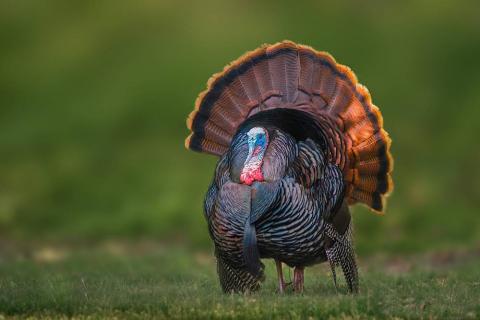It's important to understand how rifle scope magnification works. We've put together a simple guide and formula to help.

Too Many Numbers
There are just three numbers we need to concern ourselves with in regards to scope magnification. Let’s do the math on a 3-9x40 scope:
1. The 3 equals the lower end of the magnification. In other words, the target is magnified three times.
2. The 9 equals the higher end of the magnification. In other words, the target is magnified nine times.
3. The 40 equals the size of the objective lens in millimeters – in other words, the distance across the front lens of your scope. This is also known as the diameter.
What Will Work Best for Me?
There are three important things to understand:
1. What distance do we normally shoot at? If we buy a scope suitable for a 200-yard shot and try to zoom out to 1,200 yards, it will seem like we are looking through the scope with our readers on. Likewise, a scope suitable for a 1,200-yard shot will have a terrible field of view at 50 yards. We need to match our scope to the distance that we normally shoot.
2. What is the average size of the target we shoot at? If we are shooting at elk at 170 yards, we need less magnification than someone shooting a prairie dog 700 yards away.
3. Do we shoot at moving targets or multiple targets? This is an important question to ponder. The more magnification there is, the less field of view available. If we look at a group of hogs at 70 yards with a high magnification scope, it is like looking at a hog through a straw. If you’re looking at that same group of hogs with a lower magnification scope, you will see your target plus others in the same field of view.

A Little More Information
Now that our napkin math is done, we need to understand how all this magnification works together. One would think, “Hey, I will just crank my scope up to full magnification and leave it there.” Like wearing your warmest hunting clothes in winter, it makes too much sense. When you crank up the magnification on a budget scope, you’re magnifying the image brightness, sharpness, contrast and clarity flaws that the budget scope has. We are basically zooming in on a distorted image.
We all have that no-name 24 power scope that we can’t use past 14 power, or our field of view is a blurry dot moving all over the scope. We are better off getting a higher quality scope with less magnification. Then, we can zoom out to targets and still see what we are shooting at.
Another thing about magnification we need to think about is image stabilization. Every breath we take will move the rifle all over the place. If we zoom back in, it is easier to stay on target and the target clears up.

We Need Some Relief
Let's talk about scope eye injuries. Technically, eye relief and magnification are related.
Eye relief is the distance from the rear or ocular lens to your eye. The more magnification we use, the less eye relief we have. The more magnification, the less optical clarity and light transmission we have. That’s why we have to adjust the eye relief when we are zoomed all the way out. It’s a Balancing Act
Hunters everywhere are stuck balancing optical quality with optical magnification. The better a scope performs at long distances, the bigger the price tag. The more affordable a scope is, the less it performs at longer distances. It's up to you on what works best for your gear at your price range.




























